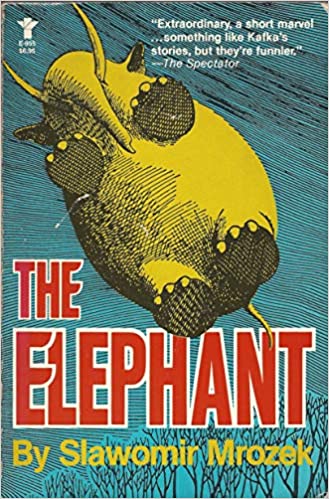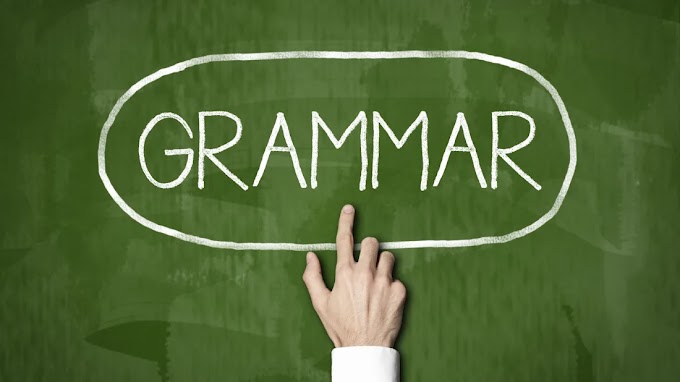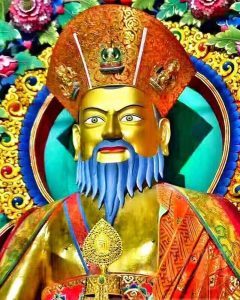5 elements of Poetry
Click here for 👉✌Figures of Speech which are used in poem
1. Imagery
The only thing that will make your poetry powerful and enticing is great imagery. This goes along with the line you always hear “show don’t tell.” Only with poetry, it’s ALL show and NO tell. For the love of god, don’t just say that love hurts, give us a metaphor. Show us a weapon, maybe draw some blood. Make it appeal to the five senses
2. Rhythm
Yes, rhythm can include rhyme. No, it doesn’t have to. It’s not even recommended. In fact, the further away you can get from Dr. Seuss, the better. (Of course not all poems that rhyme are obnoxious, but I think you can use fair judgement here.)
There are other ways to make a poem rhythmic without rhyme. Stringing words with similar sounds together in a line works very well.
(this is an example of assonance, the repetition of vowel sounds in nearby words)
Simultaneous hate came with the pain
(this is an example of consonance, the repetition of consonant sounds at the end or middle of words)
the same rhymes are momentously timed
3. Sound
The rhythm of a poem goes along with the general sound of it as well as making it easier to remember. There are two sound patterns to know here. One is soft and harmonious, I like to think of it like the sound of angels humming. This is euphony.
In euphony, words are chosen for their soft consonant sounds and melodious quality.
(euphonious letters/sounds: L, O, S, SH, M, N, Y, W, U, PH, A)
Lulled minds like sunny lakes in summertime
The other sounds more like large metal machines clanging about in an empty warehouse. It’s much harsher and the sounds kind of rattle off your tongue. This is cacophony.
In cacophony, words are chosen for their hard sounds and general obnoxiousness.
(cacophonic letters/sounds: K, J, T, Q, V, C, X, G, Z, CH)
Childish tales of gung-ho attitudes never results in progres
4. Density
Density is what sets poetry apart from prose (normal speech patterns/ the way fiction and nonfiction books are written) Density is how much is said in how little of space. The ability to use metaphors, not conform to traditional grammar styles, and incorporate sounds and rhythms is unique to poetry. All of these allow for greater density.
As you describe an image, you’re actually underlying a metaphor, which expresses an idea about the human condition, while simultaneously persuading the reader to feel a certain way through the sound and rhythm of the words, and all of this is done in the same space. Pros can’t, and never will, be able to do that.
5. Line
In traditional poetry, you’re a prisoner to the line. The line owns you, telling you “Four lines there, five there, then four again.” So as a poet in the hipster age, of course you don’t want to conform. Unless you’re so against the grain that you actually want to write traditional poetry. But whatever the case may be, the line is a very important part of poetry. In fact, that’s another thing that makes it unique to pros. In prose, you can format the lines however you want and it has no impact on the writing. However, in poetry, that’s not the case.
In poetry line is like one sentence. And since poetry doesn’t conform to grammar rules, and no one is obliged to use a period, the end of a line is like a period would be in pros. It creates a natural pause, making a break in the flow. This is a tool you can use to control the rhythm of your poetry. So keeping the way you break your lines up in mind is crucial to writing great poems.
Type of Poems
Ballad
Are you familiar with the term "ballad"? You probably are, because people sometimes refer to songs - particularly romantic ones - as ballads. In fact, ballad poems are frequently sung - or at least they are intended to be sung - and are often about love.
Usually, these ballads tell a story, often of a mystical nature. Just as a song does, ballads tend to have a refrain that repeats at various intervals throughout.
Guido Cavalcanti's "Ballad" and Sir Walter Raleigh's "As You Came from the Holy Land" both demonstrate the musical quality of the ballad. As an excerpt from Raleigh's poem demonstrates:
As you came from the holy land
Of Walsinghame,
Met you not with my true love
By the way as you came ?
How shall I know your true love,
That have met many one,
As I went to the holy land,
That have come, that have gone?
Elegy
Because poems can express a wide variety of emotions, there are sad forms of poetry as well as happy ones. One of these sad forms is known as an elegy.
Elegies express a lament, often over the death of a loved one. This makes elegies especially popular for funerals. Some elegies are written not only to be read out loud; they can be put to music and sung.
Alfred Tennyson's "In Memoriam" is an elegy to a close friend, Arthur Henry Hallam, and was written over 20 years:
Strong Son of God, immortal Love,
Whom we, that have not seen thy face,
By faith, and faith alone, embrace,
Believing where we cannot prove;
Thine are these orbs of light and shade;
Thou madest Life in man and brute;
Thou madest Death; and lo, thy foot
Is on the skull which thou hast made.
Epic Poem
One of the longest types of poems is known as the epic poem, which has been around for thousands of years.
Technically a type of narrative poem, which tells a story, epic poems usually tell the story of a mythical warrior and the great things that he accomplished in of his journeys, such as The Odyssey and The Iliad.
Epic poetry began as folk stories that were passed down from generation to generation, which were then later written into long form.
One of the oldest epic poems is actually one of the oldest pieces of written literature in the world. This ancient Mesopotamian poem is called the Epic of Gilgamesh and dates back to 1800 BC. The start of this epic (with the translator's notes) reads:
He who has seen everything, I will make known (?) to the lands.
I will teach (?) about him who experienced all things,... alike,
Anu granted him the totality of knowledge of all.
He saw the Secret, discovered the Hidden,
he brought information of (the time) before the Flood.
He went on a distant journey, pushing himself to exhaustion,
but then was brought to peace.
He carved on a stone stela all of his toils,
and built the wall of Uruk-Haven,
the wall of the sacred Eanna Temple, the holy sanctuary.
Free Verse
While it is easy to think that poems have to rhyme, free verse is a type of poetry that does not require any rhyme scheme or meter. Poems written in free verse, however, do tend to employ other types of creative language such as alliteration, words that begin with the same sound, or assonance, the repetition of vowel sounds.
Some people find free verse to be a less restrictive type of poetry to write since it doesn't have to employ the form or the rhyming schemes of other types of poetry.
The free verse form of poetry became popular in the 1800s and continues to be popular among poets even to this day. TS Eliot was one of the masters of the form, as best seen in his poems "The Waste Land" and "The Love Song of J. Alfred Prufrock," which begins:
Let us go then, you and I,
When the evening is spread out against the sky
Like a patient etherized upon a table;
Let us go, through certain half-deserted streets,
The muttering retreats
Of restless nights in one-night cheap hotels
And sawdust restaurants with oyster-shells:
Streets that follow like a tedious argument
Of insidious intent
To lead you to an overwhelming question.
Oh, do not ask, "What is it?"
Let us go and make our visit.
Haiku
Many people have heard about haiku. In fact, most of us are instructed at one point or another - usually in middle school or high school - to write one of our very own. Even if you did that, do you remember what this type of poem actually is?
Haiku is a Japanese form of poetry which is composed of three non-rhyming lines. The first and third lines have five syllables each and the second line has seven syllables. They often express feelings and thoughts about nature; however, you could write a poem about any subject that you would like to in this form. Perhaps the most famous haiku is Basho's "Old Pond:"
Furuike ya
kawazu tobikomu
mizu no oto
Translated, this poem reads:
The old pond--
a frog jumps in,
sound of water.
Imagery
We decided to place a focus on imagery poems because of the immense power that they possess. Many, many poems can be classified as imagery poems; however, some are better at the task than others.
Individuals who often write imagery-based poems are known as Imagists. William Carlos Williams' short poem "The Red Wheelbarrow" is a famous example of a short imagist poem:
so much depends
upon
a red wheel
barrow
glazed with rain
water
beside the white
chickens.
These types of poems work to draw a picture in the mind of the reader, in order to give an extremely powerful image of what the writer is talking about. They work to intensify the senses of the reader.
Limerick
A limerick is a poem that is often silly or whimsical, written in five lines with an AABBA rhyme scheme. Often, limericks tell a short, humorous story.
These types of poems have been popular for hundreds of years, particularly in the English language. When limericks first became popular, they often expressed ideas that were crude and off-color but today, limericks express all sorts of ideas.
The form of the limerick was made popular by a British poet named Edward Lear in the 1800s, whose limericks often started off: "There once was..." or "There was...".
Some of his limericks include "There was an Old Man with a Nose" and "There was a Young Lady of Dorking," which goes like this:
There was a Young Lady of Dorking,
Who bought a large bonnet for walking;
But its colour and size,
So bedazzled her eyes,
That she very soon went back to Dorking.
Pastoral
One of the poetic favorites is pastoral poetry because it elicits such wonderful senses of peace and harmony. Examples of this form include Keats' "Ode on a Grecian Urn," which is also a type of ode. A stanza of this poem reads:
Thou still unravish'd bride of quietness,
Thou foster-child of Silence and slow Time,
Sylvan historian, who canst thus express
A flowery tale more sweetly than our rhyme:
What leaf-fringed legend haunts about thy shape
Of deities or mortals, or of both,
In Tempe or the dales of Arcady?
What men or gods are these? What maidens loth?
What mad pursuit? What struggle to escape?
What pipes and timbrels? What wild ecstasy?
Like the haiku, nature is often at the center of these types of poems as well. In general, pastoral poetry will focus on describing a rural place, but the terms will be peaceful and endearing. You will feel at ease after reading these types of poems.
Many pastoral poems are written about shepherds. They are written as a series of rhyming couplets.
Sonnet
One of the most famous types of poetry, the sonnet, has been popular with writers from Dante to Shakespeare.
A sonnet contains 14 lines, typically with two rhyming stanzas known as a rhyming couplet at the end.
There are several types of sonnets, including:
Italian (also known as Petrarchan)
Spenserian
English or Shakespearean sonnet
William Shakespeare, famous for writing more than 150 sonnets (including his popular "Sonnet 138") is credited with creating for a form of the sonnet that enjoyed widespread popularity throughout England for hundreds of years. "Sonnet 138" reads:
When my love swears that she is made of truth
I do believe her, though I know she lies,
That she might think me some untutor'd youth,
Unlearned in the world's false subtleties.
Thus vainly thinking that she thinks me young,
Although she knows my days are past the best,
Simply I credit her false speaking tongue:
On both sides thus is simple truth suppress'd.
But wherefore says she not she is unjust?
And wherefore say not I that I am old?
O, love's best habit is in seeming trust,
And age in love loves not to have years told:
Therefore I lie with her and she with me,
And in our faults by lies we flatter'd be.









0 Comments